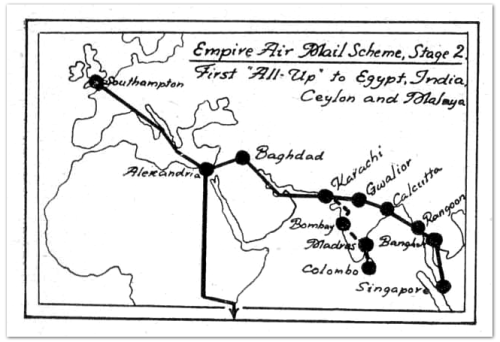I know what you’re thinking – you want more Malawi history! I hear ya! As it’s been a slow blog-worthy topic week, I thought I’d recycle this article I wrote forThe Eye (an indispensable local magazine). You’re probably thinking that the history of the Malawian Postal system is about as interesting as watching paint dry, but give it a chance!
In Malawi’s early colonial days, writing a letter and sending it to a loved one set a complicated logistical postal system into motion. While the Home Office might design a “big-picture” strategy for mail delivery, the postal system was at the local level required ingenuity and innovation.
A letter would pass through many hands, like a baton in a relay race. The letter would travel by land and water, and if fortunate, bypass curious hippos and hungry lions. Considering the thousands of miles a letter would travel from Zomba to England, it was a testament to the innovative postal system in Malawi (then Nyasaland) that it ever arrived at all. But letters did arrive and the postal system eventually became a successful and powerful service in Nyasaland.
Creating an efficient postal service in Nyasaland was a vital priority for Commissioner and Consul-General, Henry (Harry) Johnston who appointed Hugh Charlie Marshall as Postmaster General on his fourth day in Nyasaland in 1891. Before this time, mail was sent down the river to Quelimane in Mozambique and folded into the regular Portuguese postal system, bearing Portuguese stamps. During this period, many letters went missing. While suspicious colonists were ready to blame the Portuguese, it was discovered that the Portuguese were not responsible for the loss of mail. Instead, it was the work of “pugnacious hippos” who overturned canoes.
To create a self-sufficient Nyasaland postal service, the Postmaster General created a complex and innovative logistical system involving mail runners, canoes, and steamer ships . With a Postmaster General, Nyasaland could finally issue its own stamps, which were sent in bulk from England. Stamp shortages were common and in one instance an entire shipment of stamps went missing. Assuming that they were stolen, the Postmaster General was instructed to personally initial the back of each legitimate stamp. Hoping to avoid initialing at least 30,000 stamps by hand, he recommended switching to a system of secret markings, a method that remained in place long after his tenure. A year after disappearing, the missing stamp shipment was found in a warehouse on the banks of the Zambezi where it had been mistakenly offloaded.
The backbone of the postal structure was a system of runners who would carry mail bags great distances across the width and breadth of the country. The job was a coveted one and mail runners were well paid, well respected, and trusted. Runners were selected from all different tribes and regions and often displayed astounding endurance and bravery. Their red and white uniform consisted of long coats, knickers, and a fez, as well as standard issue Snider rifles and a lantern. They preferred to be barefoot and often carried the mail bags on their heads or shoulders.
Runners were remarkably fast. It took seven days for a letter to travel from Chiromo to Fort Johnston and only two days for a letter to reach Mulanje from Blantyre. By 1899, they were covering 10,000 miles in a single month and continued to transport mail even as late as 1937, when the postal service introduced the use of bicycles.
While runners were extremely effective, the postal system faced many challenges from the local wildlife. When the system was first introduced, “the old settlers were convinced [that] the mail carriers would be eaten by lions.” To protect their employees, the post office issued rifles and lanterns. Post Master General Ernest Harrhy wrote in 1894 that “two carriers carrying mail bags between Mpimbi and Zomba were confronted by several lions. Deeming discretion to be the better part of valour, they sought safety in the high branches of a friendly tree, and waited until their leonine majesties condescended to move on to pastures new.” Postmaster General Gosling wrote in 1903 that “cases have occurred where the mail men have been driven to take refuge in a tree, and leave the bags at the foot to be smelled and pawed and discarded as inedible by disappointed beasts of prey, and mails have sometimes been delayed on that account.” He also noted that leopards were a more common annoyance than lions. Other wildlife proved challenging as well. When runners were finally replaced by a lorry, elephants would routinely knock it over.
Overcoming the initial logistical challenges of life in remote Nyasaland the postal service became a large and powerful division within the government. In 1963, when the Malawian Government officially took full control of the department, it was the fourth largest behind medical, police, and district administrative services departments.
Today, as we send emails in only a few seconds, it is easy to take the postal service for granted. Yet considering the challenges and the uniqueness of Malawi’s postal system, it is important to remember it as a testament to willpower and imagination.
To learn more about the history of Malawi’s postal service, visit the Namaka Postal Museum which is housed in a traditional mail carrier’s hut. The museum is located on the right side of the road as you travel from Blantyre to Zomba.
